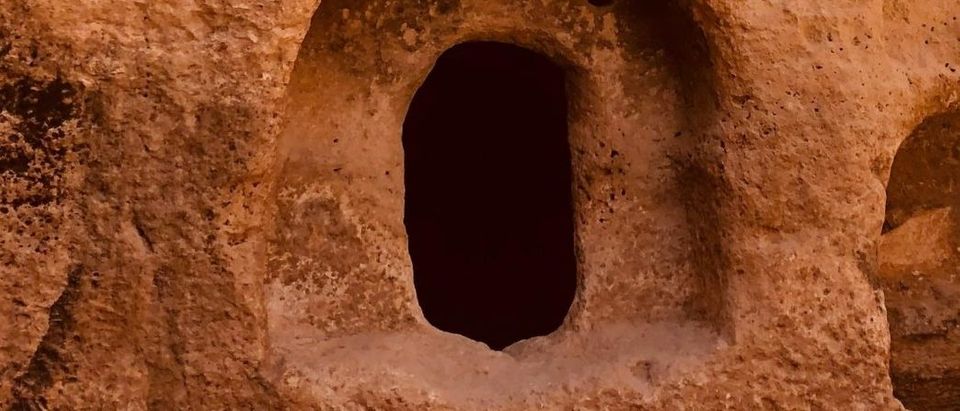
Archaeologists shared a statement in late July where they admitted to being quite confused about the true identity of a 2,200-year-old skeleton unearthed in the Tomb of Cerberus in Guigliano, Italy.
The tomb was uncovered near an ancient Roman necropolis, enthralling archaeologists upon its discovery due to the stunningly decorated murals, according to Live Science. After detailed investigations, the research team opened a passage within the tomb, leading to a sarcophagus that had remained sealed for at least 2,000 years, according to a statement from the Italian Ministry of Culture.
Within the sarcophagus, the team found a body in an “excellent state of preservation,” surrounded by goods. The individual was buried on their back, with the specific “climate conditions of the funerary chamber” allowing for the shroud covering the body to be mineralized.
“The Tomb of Cerberus continues to provide valuable information on the Phlegraean territory near Liternum, expanding knowledge of the past, and offering opportunities for research of a multidisciplinary nature,” superintendent Mariano Nuzzo said in the statement. (RELATED: Archaeologists Reveal Discovery Of Incredible 7,000-Year-Old Neolithic Boats)
The team plans to gradually release information as it becomes available to them, particularly on the shroud and the composition of the yarn. They also hope to figure out where it was manufactured.
But the biggest question remains: who was this person?
Academics and researchers from across disciplines such as archaeology, chemistry, paleobotany and anthropology are digging in to try and answer all of the questions arising from the tomb’s discovery. (RELATED: Residents Of Once-Lost Roman Estate Likely Watched Thousands Die In Ancient Cataclysm, Researchers Claim)
For now, the researchers are waiting on DNA results to shed light on the person’s ancestry and possible genetic conditions. Herbs and other plants found around the body suggest they were treated with creams containing absinthe. The reigning theory thus far is that the person was the “progenitor of the family for which the mausoleum was built.”
We’ll let you know more when we do!


No comments:
Post a Comment